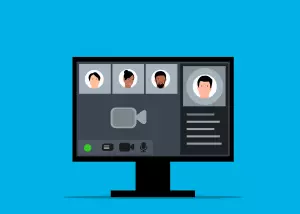The success of any business initiative relies on its employees and this is particularly true during a digital transformation.

Most businesses today are undergoing quick transformations and it is critical for internal communication teams to understand how to do many things differently, such as reaching increasingly dispersed workforces.
Enterprise video tube is an innovative concept that helps enterprises to keep employees engaged. Whether they are in office or working from home, employees have access to video assets to use for many different internal communication purposes.
What is Video Tube? Your own video channel, your own YouTube

Cincopa is launching a VideoTube solution for its enterprise and content publisher clients that want to create their own white label video channels for internal communication, corporate hangout as well as for marketing purposes.
Enterprises will have many benefits that they don’t have when they host their videos on free video hosting platforms like YouTube.
Video hosting on YouTube means enterprises do not have full control over their own video assets. They can’t remove the YouTube logo from their videos and have few branding options.
Enterprises and organizations have no control over what YouTube recommends to viewers which can distract them and take them away from their video content.
YouTube can also restrict organizations with the right to publish and monetize their videos.
With a video tube solution, enterprises can create their own white label video channels. This gives them complete control over uploading, storing, organizing, sharing and monitoring their videos.
They can communicate internally without risking the chance of confidential information getting into the wrong hands.
What is internal communication for enterprises?

Internal communication informs all employees and connects them, creating a shared understanding of the goals and values of an enterprise. It keeps employees up-to-date with the latest initiatives and facilitates clear communication between all the different departments.
Two of the main challenges affecting internal communications today are technological advances and the move to more remote workforces. Both of these trends could radically change the workplace as we know it.
These two challenges also have the potential to challenge internal communication teams more than ever before.
Internal communication does not refer just to the sending of broadcasts from the executive level down to the lower levels of the company. It also gives a voice to employees too and engages them on every level.
Internal communication can take many different forms such as chat messages, intranet messages, emails, videos, podcasts etc.
Video assets can play an indispensable role in internal communication as they offer better engagement than most other forms of communication. If most employees feel disconnected and don’t understand why changes are happening, programs initiating changes are likely to fail.
Good internal communications are necessary to support the type of engagement from employees that drive good business outcomes and videos can help this to happen.
When communication professionals have all the tools they need to create and enhance videos, they can use them for all kinds of purposes, such as ensuring employees understand why the company makes certain decisions so they are more likely to be receptive and get behind them.
The right videos can serve multiple purposes, depending on the type of information enterprises need to cover – conveying vision and values to new employees, offering training, emphasizing company culture, explaining safety protocols, making announcements and communicating updates.
Videos use verbal, visual and audio resources to explain topics and can convey even complex concepts in an understandable way. They allow companies to send powerful messages company-wide and even to remote employees located in another time zone.
How to improve internal communication in the workplace

Video Tube provides some essential features enterprises can use to increase engagement for internal communication. One of best practices in internal communications is to use private video hosting platforms.
Here are five of the advantages of a video tube for enterprises –
1. Keep video assets organized and protected
Enterprises need to host their videos in an environment that is uniquely theirs and consistent with their brand and their website. They need a distraction-free, safe and secure environment.
Hosting video assets on private video channels offers a way to store and organize them so that everyone can find what they need in one secure location.
Employees need access to videos for many different purposes and team leaders can add team members to a video channel and include specific user permissions so they only have access to the videos they need.
Teams collaborate and implement changes to video assets in one place, which reduces chances of miscommunication and increases operational efficiency. Various security measures such as Domain Lock and Password Protection can further safeguard videos on video hosting platform.
2. Create a customized and cohesive brand voice
On an enterprise video tube site, it is possible to create customizable video channels.
Using a brand’s logo, color palette, fonts, and the like in all internal communications conveys a cohesive and consistent brand message to employees. Customizing a video player and its controls further adds to the brand voice.
3. Enhance videos post-production video enhancements
Enhancing videos post-production not only makes them more searchable with video seo but enables more people to view them.
In-video search offers ways for viewers to easily find videos. This means they can access video assets whenever they need them instead of wasting time looking for them.
For example, if they have access to short and compelling corporate training videos, they can access them whenever they need to refresh their memories.
Video chaptering means employees can go straight to a specific segment of content and smart search means they can even go to a specific paragraph or phrase.
Adding subtitles and closed captions make video content accessible to speakers of other languages and give employees the option of watching videos without sound.
Annotation links at the top of videos can further engage watchers without interrupting videos.
4. Use advanced video analytics
Video analytics metrics allow enterprises to check which employees have watched videos, how long they watch and much more.
Video analytics can help organizations to ensure that everyone is on the same page and find potential areas that may need further development. If a video or specific video segment is played repeatedly, this could be a sign that the topic is difficult to understand and needs reinforcing.
5. Interact on the video page by using Like, Chat, or Share
Interaction helps to increase engagement and when employees have ways to communicate, especially if they work remotely, this can significantly improve their work experience.
Employees can record their screens, camera, or both and then share the video privately, inviting other employees to like or share them.
Create video channels for different video types

Enterprises can create channels for any type of videos, such as live streams, video-on-demand (VOD) and even linear TV.
A live streaming solution enables enterprises to broadcast live events, webinars, news, and much more. A transcoded video stream is converted for better compatibility and user experience across all devices and networks.
Enterprises can communicate privately and securely in real-time using SSO (single sign-up) to ensure the live stream is private.
Quality live streaming with an easy-to-use interface can bring all employees, including those working remotely, together in real-time for vital corporate communications.
An ‘autosave’ feature ensures that live streams are copied to a media library. This means they can be enhanced with various features, such as trimming them, adding subtitles etc. and then used as video-on-demand (VOD).
Having a library of VOD content can be a real asset to any organization. It means employees can watch videos from wherever they are on any device and at any time. With many employees working remotely, it can be a vital way to communicate with them in an engaging way.
Private video hosting platforms usually have a Content Delivery Network (CDN) with widely distributed servers so remote employees can have video content delivered to them from the nearest server at high quality and speed, which means they don’t have to endure any buffering.
Enterprises that wish to have a linear TV channel can also create one as another way to communicate internally.
Secure all video content with robust video encryption
It is very important to keep private videos safe from unauthorized access and downloads. Multi-layer security features can help to protect valuable enterprise video assets that may contain confidential information.
Encryption is a security measure that ensures content can’t be accessed by unauthorized individuals. It prevents unwanted interception and download of any video assets.
Advanced encryption standard (AES) is a tokenized security method that offers end-to-end security and acts as a buffer between browsers and servers.
Conclusion
A video tube offers enterprises and content publishers the opportunity to create their own white label video channels. This can significantly improve their internal communication in many ways.
Enterprises can customize their video channels, enhance their videos with various features, offer great video quality, have access to advanced analytics and enjoy multi-level security.
High privacy and video security is necessary to prevent any private internal communication from falling into the wrong hands. Video is a key asset for enterprises and using it for effective internal communication is essential today and is likely to be even more crucial in the future.









